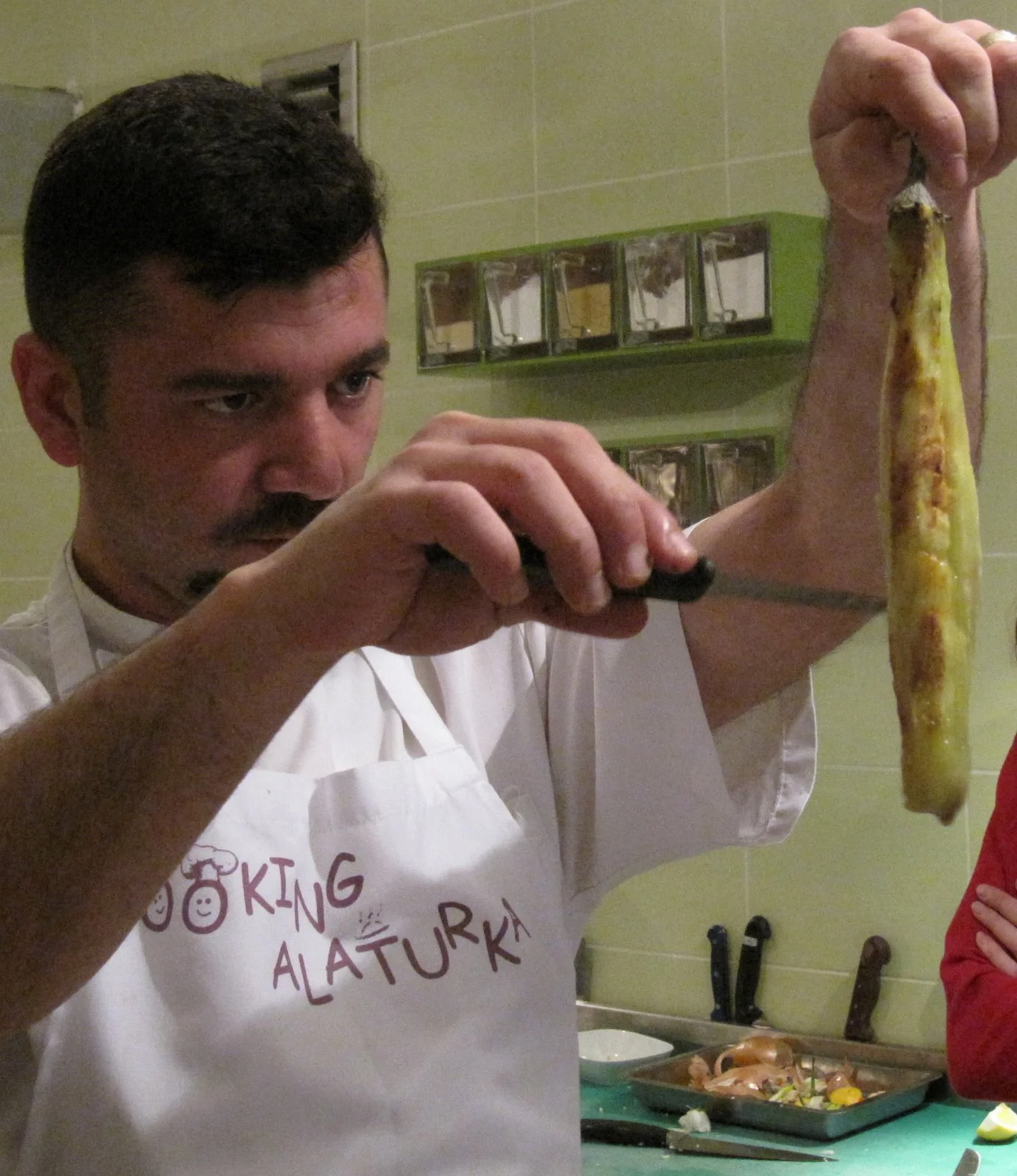A Weekend of Cooking at the Basque Culinary Center
I've had my eye on the Basque Culinary Center for a while now. It is actually a bona fide culinary school giving out bachelors and masters degrees, does R&D, and has luminaries like Pedro Subijana, Juan Mari Arzak, and Martin Berasategui on its board. The BCC also gives courses to enthusiasts through the BCulinary Club. A lot of the classes are geared towards people in the San Sebastian area, since they meet in the evenings over the course of a few weeks, but there is one class called "Finde Vasco," Basque Weekend, which is suitable for folks from elsewhere.
I had actually tried to sign up for an English version a few months ago, but that class was cancelled due to insufficient enrollees. So when the Spanish version rolled around again, I signed up for it. It runs two days; the first day is devoted to more traditional Basque cooking, while the second day focuses on avante-garde pintxos (tapas, as they are called in the Basque language).
The first day we worked in pairs preparing all of the dishes, and we each had our own workstation. Demonstration cooking this was not! We had a chef in charge, along with two assistants from the culinary school.
Here we are setting fire to pork cheeks with cognac.
The first course we prepared was egg "flowers" with roasted mushrooms and pulverized jamón iberico.
Next we made a very traditional dish, marmitako. It's a fisherman's stew, and we made our version with cod and potatoes, onions, and the flesh of rehydrated dried peppers. As we were preparing this, we had to remember the number of the pot we cooked, so that when the dishes were served, we ate what we prepared!
Next we had our pork cheeks in a sauce of cognac and red wine, along with pureed carrot with cardamon. Later I learned from our Basque classmates that this is actually not very traditional. The preparation style was, but traditionally pigs did not roam around Basque Country, so eating pork wasn't part of the area's heritage.
Finally, we had our pantxineta, a puff pastry with a filling of pastry cream and a topping of almonds. Once the pastry cream is made, and you use ready-made puff pastry, it's actually quite simple to assemble.
Day 2 was all about avante-garde pintxos, so the morning started out with an explantation of different texturizing and gelling agents to make spherical olives. Xantham gum, calcium salts, and sodium alginate are the three ingredients that allow you to make a sphere with a bursting liquid center out of many different kinds of liquids.
You start with the strained puree of olives, mixed with xantham gum and sodium aginate. Then scoop it up with a spoon and drop it in a bath of calcium salts. Leave in for two minutes to gel, then rinse in water and leave it in a bowl of olive oil. I learned later that this is the same process as making bursting boba!
Here is the finished result, along with piparra peppers that we poked with a metal-tipped syringe to evacuate the air and massaged to redistribute the seeds, then injected with an anchovy puree.
The other team worked on our "garden," which was small diced vegetables, leaves, and flowers, on a bed of "soil" (pulverized bread colored with squid ink).
The soil rested over a pool of tomato gazpacho.
We ate our pintxos after we made them, and then headed down to the old town to go on a pintxo tour with our chef. We started with more traditional pintxos, which are pieces of bread topped with some ingredients. Here are fried pieces of bread, topped with zucchini and sardines, from La Spiga.
Then we went to Ganbara and had tarts of txangurro, spider lobster typical of the area. I actually had these last time I was in town, when I did a self-guided pintxo tour!
We also met the chef of the txangurro tarts!
Next we had chuleta croquetas from a bar called Txuleta.
Finally we ended at Casa Urola with the least traditional pintxo which one had to eat with a fork - braised thistle, artichokes, and jamón with an almond sauce.
Then it was off to the bus station to catch the bus back to the airport.
Overall, this weekend was a wonderful balance of hands-on making, eating, and learning about the history of dishes. The avante-garde dishes also have histories, with who pioneered which technique in which restaurant. After I got back home and looked in our recipe booklet, I was delighted that they even included recipes for the pintxos we ate on the tour of old town, so we could try to make them again! Every detail was thought through. This was a very well-organized course, which I highly recommend. Finally, there was good camaraderie with the other participants in the course, the chef, and the coordinator. Simply good spirits all around.





